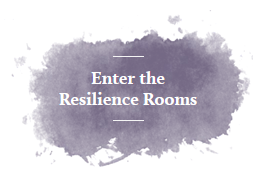I all too often hear clients complaining about their personal attributes. They express sentiments like, “I’m too sensitive and even the littlest things affect me”, “I worry about the most ridiculous things”, “I’m overly angry”, “I’m always so negative”, “I have a horribly jealous and envious side”, etc. We all have those parts we want to get rid of because they cause us distress, impose self-doubt, and make us feel generally uncomfortable.
We often make broad generalizations about who we are, how we function and how we think, feel and behave (i.e., I’m angry, I’m mean, I’m selfish, I’m anxious, etc.). This perpetuates the desire to get rid of the aspects of ourselves that we would prefer not having because our perception is that we would be better off not having “it” or being “that way.” We have this idea that we can successfully get rid of fundamental parts of who we are and control our thoughts and feelings about it.
Good luck getting rid of our emotional sensitivity, envy, worry, anger, negativity, and other parts. We all try masterful ways to deny, distain and rid ourselves of those unfavorable “parts” of ourselves. By going through that process, rather than riding ourselves of those parts, we are further intensifying the struggle with it, our desire not to have it and frustration and distain for having it. This keeps us in the cycle of self-loathing and self-hating.
When I ask individuals how they would approach their children or others who they cared about when they expressed being frustrated and hating parts of themselves, they inevitably say “with compassion and care.” When I ask why they don’t approach themselves the same way, they say they don’t know how to and for as long as they can remember, they have been so frustrated, disappointed or angry at themselves for “being” that way and they “lose” their desire and will to be patient, caring and compassionate toward themselves. Tough love was never a strategy that worked, yet we still gravitate toward it and impose it on ourselves in the hope that we’ll finally force out the unwanted parts.
Interestingly enough, it’s the self-loathing part that needs the most compassion and kindness because it’s the part that may need to evolve and be further developed. It would only make sense that there would more likeliness for flexibility, leaning in, working on and inevitably resulting in growth and change if there was the sentiment that this part can be developed and has the ability to evolve and possibly change.
Ways To Foster Self-Compassion:
(1) Be conscious not to label yourself with broad generalizations of who you are and what you’re about. For example, stick to the thoughts and feelings in the particular circumstance, rather than globally identifying yourself that particular way. For example, “my mind is being negative right now” as opposed to “I’m so negative.”
(2) Notice that we ALL have many parts of ourselves, some more favorable ones, and others that we would like to work on and further develop. Being human and embracing our humanness, we realize we’re imperfect and there is and will always be parts of us we need to work on. We are works in progress. There’s never an end point to our changing, evolving and improving.
(3) Be realistic about the feasibility of change and focus the evolution around “you” and avoid comparing yourself to others’ accomplishments or where they are at. The level of progress is individualized and everyone works at their own pace.
(4) Understand that although the part you’re challenged with can be disappointing and frustrating at times, it’s also the part that guides us and provides us important information as to what our core values are and who we truly want to be.
(5) Notice when you are being hard on yourself and are distaining that part and recognize the value that’s present. For example, if you get down on yourself for being overly protective of your child because you worry in the moment, notice the worry, your thoughts and feelings about getting worried, and identify the value that’s operating (parenting values, safety values, etc.) and thank your mind for reminding you what’s truly important to you so you can take steps to meet your needs and values.
(6) Recognize that although you have an emotionally sensitive, angry, self-centered, worried, etc. moment that you don’t necessarily need to act on that thought or feeling. You inevitably get to decide how you want to behave based on identifying and recognizing all the values that may be operating in that moment (in the example above — independence, individuation, etc.). You can make a decision or choice that’s well thought out, processed and mindful and is in line with being your best you.
(7) That part is likely to be something you have been challenged with since your childhood. You may have gotten messages from other people or society at large that you shouldn’t have it or you should rid yourself of it. This may be a shift in the way you’re dealing with it and yourself in general. It takes time and practice to see and treat yourself differently.
(8) Practice providing compassion and kindness toward the challenging part. When it shows up, notice it with curiosity and openness and avoid judging and berating yourself. With imagery you can imagine hugging that part, saying something compassionate to it and/or inviting it in to gently and kindly just be with you without wishing it were away or trying to push it away. Even when negative or uncomfortable thoughts and feelings about it are not looming, acknowledge it and purposefully and proactively show it loving kindness.
I am often face to face with my anger, a feeling that is familiar to me, and my “go to” place. It often replaces other primary feelings such as sadness or disappointment which I have come to learn are underlining the anger. The challenge is when I’m in that angry state, I can go to the place of acting out counterproductively such as becoming irritable or distant in my relationships. I can’t successfully work through my “anger” until I get to those primary feelings that’s at the root of it all. I could work through the sadness and disappointment but remaining in the anger just keeps me fueled and stuck.
It’s wonderful to know that I can be angry but that doesn’t necessarily make me an “angry and mean person.” If I experience the anger, act angrily (makes me think and feel “I’m mean”), and bask in the angriness, I continue to strengthen the belief that I’m an angry person and that there’s something wrong with me that needs fixing. I feel I have no control over that part and just want to get rid of it because, from my perspective, it’s destructive. I have learned that my anger represents what I’m sad or disappointed about which further gives me prospective about what’s truly important to me and what specifically I need to address. I appreciate the anger and all the insight it affords me. I thank my anger and show gratitude and loving kindness for it.
My seven year old daughter put it all in perspective as she talked about her anger, the attribute she doesn’t like and which she describes as “causing” her to tantrum. I asked her if she can be angry and choose not to tantrum. She questioned what she would do with her anger. I responded that she could just be with it and invite it in without choosing to act on it and she could think about what made her feel so angry and talk about it with me or someone else. She commented, “I would really need to practice that.” Priceless!



